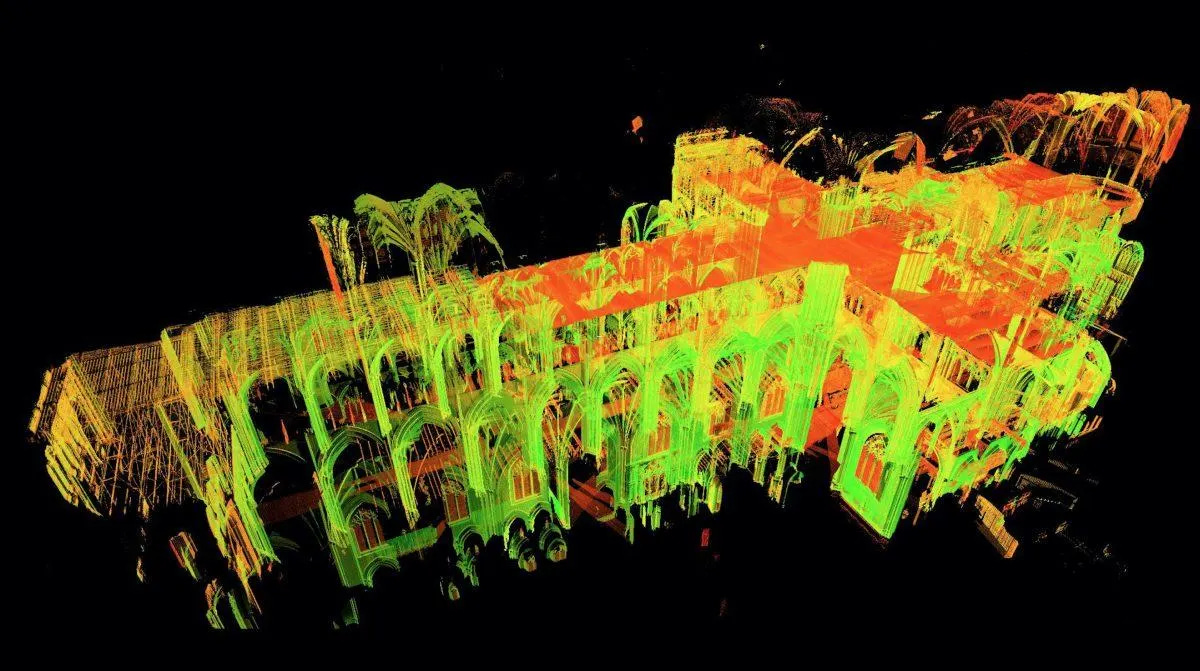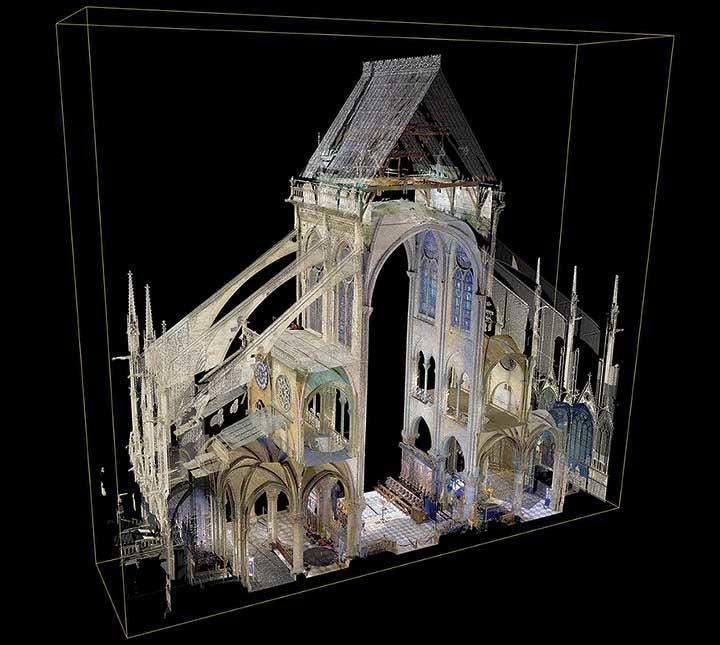Resurrecting Notre Dame: A Digital Cathedral
How digital technology enabled the incredible restoration of the worlds most famous cathedral.
This month marks the reopening of Notre Dame Cathedral, a moment of triumph following the devastating fire of 2019. The speed and scale of the restoration are nothing short of extraordinary, demonstrating the power of human ingenuity and digital innovation.
The public grief and outcry following the fire underscored the cathedral’s immense cultural significance. It also galvanised a remarkable effort to carefully restore it to its former glory:
£750 million: The total cost of the restoration, funded primarily through private donations and sponsorships.
250 companies: A vast network of organisations came together for this unprecedented project.
2,000 workers: Skilled craftsmen, engineers, and artisans were mobilised.
5 years: From disaster to reopening, the restoration was completed in record time.
At the heart of this achievement was the use of digital technologies, which enabled unprecedented precision and collaboration. These tools included reality capture, Building Information Modelling (BIM), 3D modelling, and visualisation. In this article, we explore how these technologies played a pivotal role in one of the most significant restorations ever undertaken.
Digital Technologies in Action
A Blueprint for Beginning
In the aftermath of the fire, the call to rebuild was immediate. Yet Notre Dame, with its storied history, lacked comprehensive drawings or blueprints to guide reconstruction. While photographs could have served as a reference, the project had an invaluable resource: a digital replica created years earlier.
In 2015, art historian Andrew Tallon used laser scanners to produce a highly detailed digital model of Notre Dame. This became the foundation for the restoration effort, providing a precise record of the cathedral’s structure before the disaster.
Reality Capture
Reality capture technology, such as laser scanning, photogrammetry, and drones, collects highly accurate spatial data to create detailed 3D models of physical environments. Reality capture combines advanced tools to document structures with millimeter precision.
Other use cases for the use of reality capture include:
LiDAR was used to uncover ancient Mayan ruins in the Amazon rainforest.
Urban planners used reality capture to model dense cities like Hong Kong.
The Bamiyan Buddhas in Afghanistan were scanned before their destruction to preserve their legacy.
In the case of Notre Dame, the existence of Tallon’s scans was a stroke of fortune. Without them, the restoration would have been far more time-consuming and less accurate.
Modelling Accuracy: BIM and Beyond
The data captured through laser scanning, both pre- and post-fire, was transformed into comprehensive digital models, serving as the starting point for reconstruction. Architects and engineers used this model to:
Design Key Elements: Vaults, flying buttresses, and intricate ornate details were reconstructed with incredible precision.
Simulate Structural Integrity: Engineers employed structural simulation software to model forces and determine the properties required for replacement elements.
Unfortunately, Andrew Tallon passed away in 2018 and did not witness the pivotal role his work would play. However, his contribution left an indelible mark on the project, enabling a level of accuracy that would have been impossible otherwise.
Visualising Success
The benefits of a 3D model extend beyond measurement and simulation. Visualisations created from the model supported:
Stakeholder Engagement: Architects, funders, and the public could visualise the restoration plan and its expected outcomes.
Lighting Design: The model allowed architects to simulate and plan a new lighting scheme, optimising how light interacts with the restored spaces.
These visual tools bridged gaps between technical teams and broader audiences, ensuring alignment and understanding across stakeholders.
Collaboration Through Digital Platforms
The complexity of Notre Dame’s restoration required seamless coordination among 250 companies and thousands of workers. Digital platforms like Autodesk BIM360 provided a single source of truth, enabling real-time collaboration across teams worldwide.
Centralised Data: All stakeholders could access up-to-date project information.
Improved Efficiency: Digital platforms reduced delays and minimised errors by streamlining communication.
Key Software Tools
Autodesk were a large supporter of the projects through use of their tools and expertise.
The specific solutions used were:
Revit: Developed the BIM model, integrating data from laser scans and photogrammetry to facilitate precise planning and coordination.
ReCap Pro: Processed point cloud data from pre- and post-fire scans, creating accurate 3D representations of the cathedral.
Navisworks: Enabled visualization of complex assemblies and detection of potential design conflicts.
BIM360: Supported real-time collaboration among diverse teams.
Lessons for Asset Owners
Notre Dame’s restoration offers invaluable lessons for owners and operators of buildings and infrastructure:
Maintain Digital Records: Accurate as-is data, like digital twins, can be a game-changer for maintenance, renovation, or disaster recovery.
Invest in Collaborative Tools: Digital platforms ensure effective communication and reduce the risks of information silos.
Leverage 3D Models: These models are invaluable for planning, stakeholder engagement, and uncovering potential issues before they arise on-site.
Notre Dame’s fortune lay in Andrew Tallon’s foresight, but asset owners can take deliberate steps to ensure their buildings are prepared for future challenges.
A Modern Masterpiece
The restoration of Notre Dame is nothing short of incredible. It is a testament to human creativity, determination, and the potential of digital technologies. The project serves as a powerful reminder of what can be achieved when tradition meets innovation.
The success of this effort inspires us to imagine a future where digital tools not only preserve our past but also help us build a more resilient and sustainable world. Isn’t it amazing?







The role of digital technology in Notre Dame’s restoration is truly remarkable. Tools like BIM and laser scanning not only preserved the cathedral’s intricate details but also streamlined collaboration across global teams. It’s a perfect example of how innovation can safeguard our history while shaping the future.
Great post Neil. Really interesting.